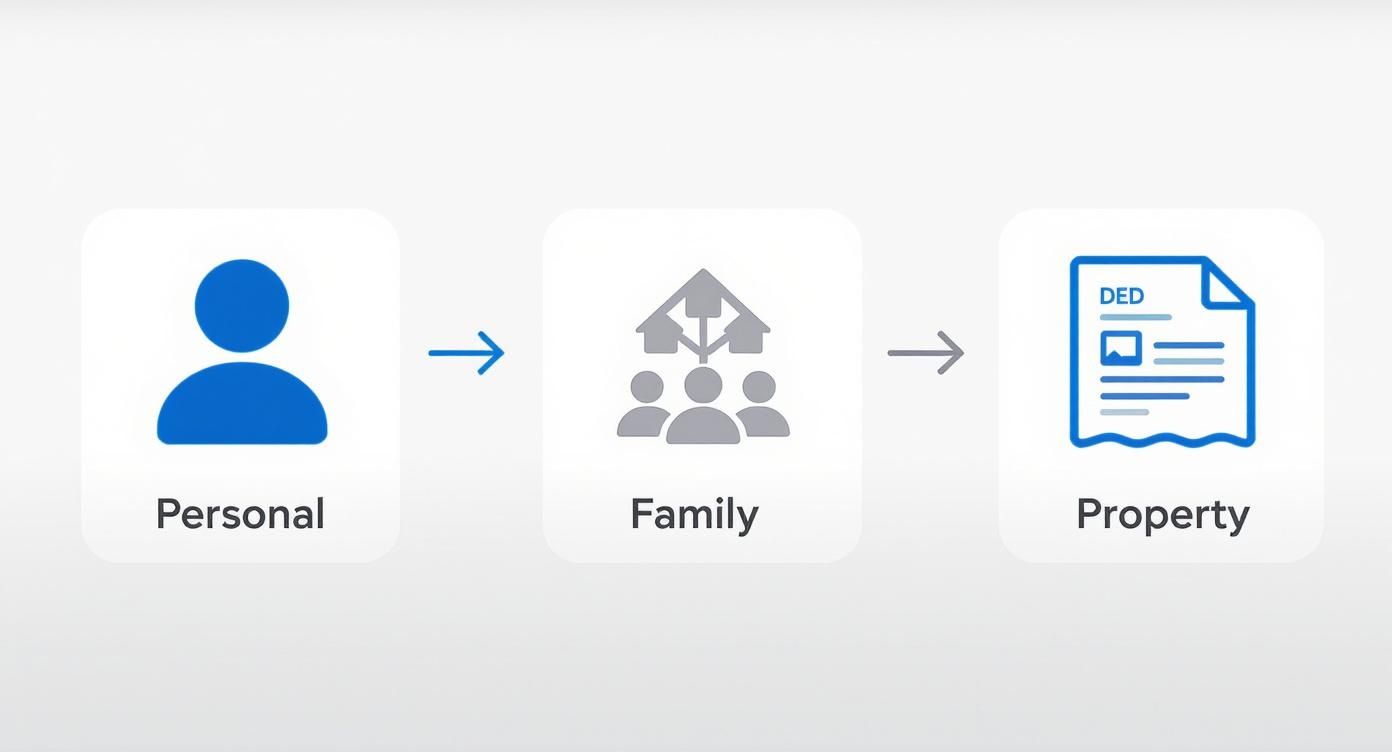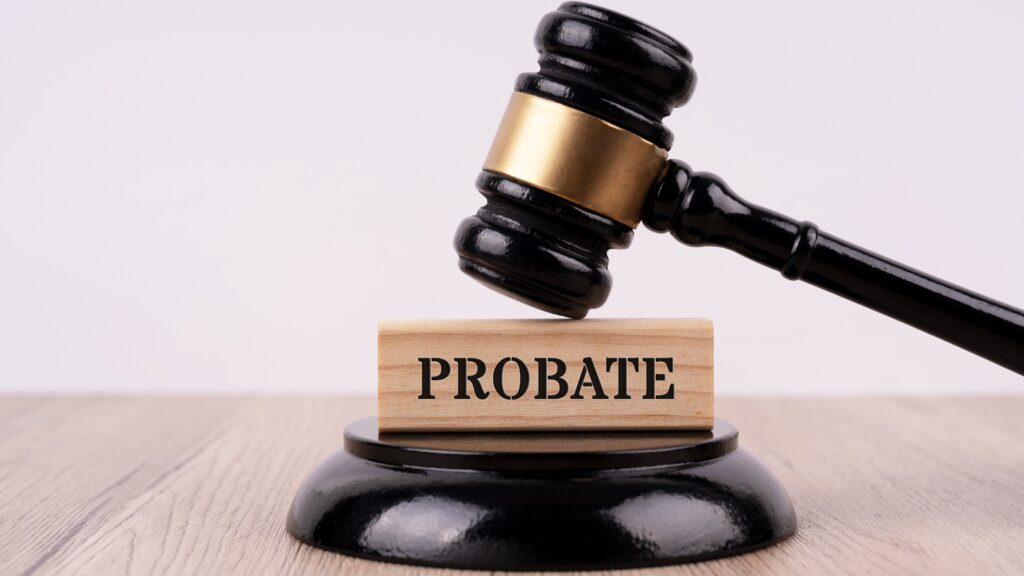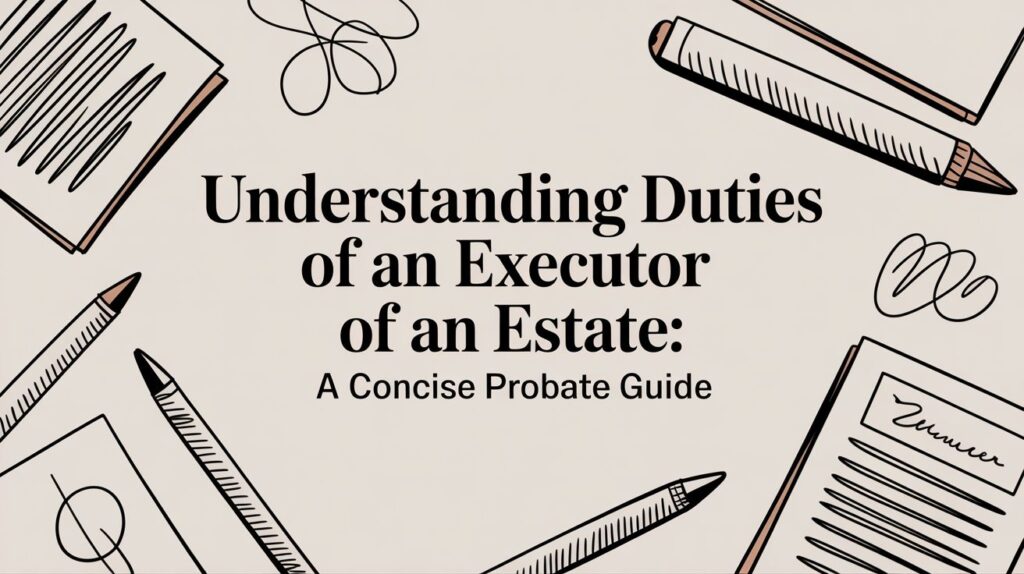When a loved one passes away in Texas without a will, the family is often left wondering what to do next, especially when it comes to property. Dealing with legal matters while grieving can feel overwhelming, but you are not alone. For many families, the Affidavit of Heirship is the answer—a crucial legal tool designed specifically for this situation. It serves as a more straightforward path than formal probate court, offering clarity and peace of mind when it’s needed most.
This guide will walk you through the process step-by-step, explaining complex terms in plain English and helping you understand what to expect.
Understanding the Texas Affidavit of Heirship
Navigating the loss of a family member is hard enough without the added stress of legal complexities. When there’s no will, the law calls this dying "intestate," and the Texas Estates Code has specific rules for how the deceased’s assets get distributed. The Affidavit of Heirship provides a clear and efficient way forward, particularly when the estate's main asset is real estate, like a house or land.
Think of the affidavit as a formal, sworn statement that essentially draws a family tree for the county. It identifies the rightful heirs based on Texas's intestate succession laws and clears the way to transfer the property's title. This document tells the world who legally owns the property now.
The Purpose of an Heirship Affidavit
So, what does this document actually do? An affidavit of heirship serves a few critical functions for families dealing with an estate that has no will:
- Avoids Formal Probate: Its biggest advantage is bypassing the potentially long and expensive process of a full Texas Probate Process. For simple estates, this can save significant time, money, and emotional energy.
- Establishes a Clear Chain of Title: By officially recording the heirs, the affidavit creates a clean and legally recognized transfer of ownership for real property. This is absolutely vital if you ever plan to sell the property or get a mortgage on it.
- Provides Legal Evidence: Once filed, the affidavit becomes an official part of the county property records. This gives it legal weight, making it a trusted document for title companies, banks, and other institutions.
The use of an affidavit of heirship in Texas is grounded in state law. Under Texas Estates Code § 203.001, a correctly executed and recorded affidavit serves as prima facie evidence of the facts it contains. That’s a plain-English way of saying it’s accepted as correct until proven otherwise. This gives it the power to establish who the heirs are, which is incredibly important when the time for a formal probate has already passed.
When Is This Affidavit the Right Choice?
An Affidavit of Heirship is a powerful tool, but it isn’t the right fit for every situation. It works best when:
- The person who passed away (the decedent) died without leaving a will.
- The only significant asset in the estate is real estate.
- All the heirs are on the same page and agree on how to handle the property.
- The estate has no outstanding debts, other than maybe a mortgage on the home.
Let's imagine a realistic scenario. A widow passes away in Houston, leaving only her home to her three adult children. Since she didn't have a will, the children can work together to complete and file an Affidavit of Heirship. This lets them transfer the home's title into their names without needing a court-appointed administrator, allowing them to focus on grieving and supporting one another.
This approach simplifies a difficult time, letting the family focus on what really matters. For a deeper look at the processes involved when someone dies without a will, you can check out our guide on how to initiate intestate probate in Texas.
Affidavit of Heirship vs Formal Probate: A Quick Comparison
While an Affidavit of Heirship is a great tool for some families, others might find that their situation requires a formal probate administration. This table breaks down the key differences to help you see which path might make more sense for you.
| Aspect | Affidavit of Heirship | Formal Probate (Administration) | Best For |
|---|---|---|---|
| Process | A sworn statement filed in county records. No court hearings. | A court-supervised process involving an administrator, inventories, and formal notices. | The affidavit is simpler and faster; probate is more thorough. |
| Cost | Typically much lower. Involves filing fees and possibly attorney fees for drafting. | Can be expensive, with court costs, attorney fees, and administrator fees. | Families looking for a cost-effective solution for a simple estate. |
| Timeline | Can be completed in weeks. | Often takes 6 months to over a year to finalize. | Situations where speed and simplicity are the top priorities. |
| Debts | Only suitable when there are few or no estate debts. | Handles complex debts, notifying creditors and resolving claims under court supervision. | Estates with multiple creditors or complicated financial issues. |
| Disputes | Requires full agreement among all heirs. Does not resolve conflicts. | Provides a legal forum to resolve disputes between heirs or with creditors. | Families who are in complete agreement about the estate. |
Ultimately, choosing between an affidavit and formal probate depends on your family's specific circumstances—the complexity of the estate, the level of agreement among heirs, and whether there are debts to be settled. The affidavit provides a quicker, cheaper route for straightforward cases, but probate offers the structure and legal authority needed for more complicated estates.
Finding the Right People to Sign the Affidavit

Successfully filing a Texas Affidavit of Heirship all comes down to getting the right people involved. It’s not just a matter of filling out a form; you need specific signatures to make it legally binding. Figuring out who needs to sign is the first real hurdle after you’ve decided this affidavit is the right tool for your family.
A properly signed affidavit carries real legal weight. One signed by the wrong people? It’s basically worthless.
The process usually kicks off with an heir—someone who stands to inherit property under Texas law. Often, one of the heirs will get the ball rolling and sign the affidavit. But the document's real power comes from a completely different group of people: the disinterested witnesses.
The Crucial Role of Disinterested Witnesses
The Texas Estates Code is very specific about who can provide the sworn testimony needed to validate the affidavit. The law demands that the document must be signed by two disinterested witnesses. This isn't just a suggestion; it’s a non-negotiable legal requirement.
So, what exactly is a "disinterested witness"? It's someone who:
- Knew the deceased person for a good long while.
- Is familiar with the family’s history—marriages, divorces, children, and all the other branches of the family tree.
- Will not gain a single penny from the estate. This is the absolute key. They cannot be an heir or stand to benefit financially in any way.
This rule is what gives the affidavit its credibility. These witnesses are essentially providing a sworn, unbiased account of the family’s history that becomes part of the public record. Their lack of a financial stake is what makes their testimony trustworthy in the eyes of the law.
Who Makes a Good Disinterested Witness?
Finding the right witnesses can feel a little daunting, but they’re often closer than you think. You're looking for people who can confidently and honestly answer questions about your loved one’s life. The best candidates are usually people who were part of their social or community circles for years.
Good examples of a potential disinterested witness include:
- A close family friend who knew the decedent for over 10 years.
- A long-time neighbor who watched the family grow up.
- A former colleague who worked with them for a significant part of their career.
- A fellow member of their church or a community group they were passionate about.
For a deeper dive into the legal standards for witnesses in Texas probate, our guide on proofs in Texas probate, including affidavits and witnesses, has a lot of valuable detail. It's worth a read to make sure your witnesses will hold up under scrutiny.
A Real-World Example of Choosing Witnesses
Let's walk through a common scenario. Maria’s father, Robert, passed away in Texas without a will. He owned his home free and clear, and his only heirs are Maria and her brother, David. To get the house title transferred, they've decided an Affidavit of Heirship is their best option.
Maria and David are heirs, so they cannot serve as disinterested witnesses. They need to find two other people who meet the legal criteria.
First Witness: Maria immediately thinks of Sam, her dad’s best friend. Sam and Robert knew each other for over 40 years, were college roommates, and Sam was the best man at Robert's wedding. He had dinner with the family almost every Sunday. Sam isn't related and isn't a beneficiary, making him a perfect disinterested witness.
Second Witness: David brings up their next-door neighbor, Mrs. Henderson. She's lived next to their family for 30 years and watched Maria and David grow up. She knows Robert was only married once (to their late mother) and that they are his only children. She has no financial tie to the estate, making her an ideal second witness.
By choosing Sam and Mrs. Henderson, Maria and David are setting themselves up for success. Their affidavit of heirship texas form will be backed by credible, impartial testimony that meets the strict standards of Texas law. This kind of thoughtful selection is what makes the process go smoothly.
What Information Do You Need to Complete the Form?
Think of the affidavit of heirship Texas form less like a legal document and more like a detailed family story. Every piece of information you gather helps paint a clear picture for the title company and the county, establishing a legally sound line of inheritance. We understand that gathering all this while you're grieving can feel like a heavy lift, so we've broken it down into a simple, manageable checklist to guide you.
Accuracy is everything here. A simple mistake—like getting a marriage date wrong or forgetting to list a child from a previous relationship—can create massive title problems years down the road. Taking your time to get every detail right now is the best way to protect your family from future legal headaches.
The Decedent’s Personal History
First, you need to establish the identity and life timeline of the person who has passed away (the "decedent"). This is the foundation of the entire affidavit.
You'll need to pull together the following:
- Full Legal Name: Use the name exactly as it appears on their birth certificate or other official ID.
- Date and Place of Death: You'll find this on the official death certificate. It’s a critical fact for setting the timeline.
- Last Known Address: Where were they living when they passed away?
- Complete Marital History: This is one of the most important—and often trickiest—parts. You have to list every single marriage, including the date it started, when it ended, and how it ended (divorce, annulment, or the spouse's death).
This marital history is non-negotiable because Texas is a community property state. That means property bought during a marriage often belongs to both spouses, which directly impacts who inherits what. Forgetting about a brief marriage from decades ago can lead to an incorrect division of assets and open the door to claims from heirs you didn't even know existed.
Mapping Out the Family Tree
Next, you’re going to build a detailed map of the decedent's family. The law that governs this is the Texas Estates Code, Title 2, Subtitle E, Chapter 201, which lays out a very clear order of succession when there’s no will. The affidavit has to follow this legal hierarchy to the letter.
Start by making a comprehensive list of all known heirs, beginning with the closest relatives:
- All Children: List every child by their full name, date of birth, and current address. You must include children born within a marriage, outside of a marriage, and any legally adopted children. Under Texas law, they all have equal inheritance rights. If any child has passed away before the decedent, you also need to list their children (the decedent's grandchildren), as they typically inherit their parent's share.
- Parents: If the decedent had no children, their parents are next in line. You'll need their names and whether they are currently living.
- Siblings: If the decedent had no children and their parents are also gone, their siblings (and the children of any deceased siblings) become the rightful heirs.
A Word of Caution: The goal here is to be completely transparent about the family. Intentionally omitting an heir is fraud, but even an honest mistake can invalidate the affidavit and spark a nasty legal battle. It is always better to be overly thorough than to leave someone out.
Documenting the Real Property
The final piece of the puzzle is the full legal description of the real estate. This is not the same as the street address. The legal description is the official identifier used in all property records, and it has to be exact.
You can usually find the legal description on one of these documents:
- The original deed to the property.
- The most recent property tax statement from the county appraisal district.
- The county clerk's real property records online.
For example, a legal description won’t say "123 Oak Street." It will look more like this: "Lot 10, Block B, of the OAK RIDGE ESTATES subdivision, in Harris County, Texas, according to the map or plat thereof recorded in Volume 123, Page 45 of the Map Records of Harris County, Texas."
This precision is what removes any doubt about which property is being transferred. It’s the final step that connects the family's story directly to the physical asset, creating a clean chain of title for the new owners.
Filing and Recording the Affidavit Correctly
Once you've gathered all the necessary information and filled out the affidavit of heirship Texas form, you're at the final, most important stage: making it legally official. This is where a carefully prepared document transforms into an official record that solidifies your family's claim to the property. Think of it as the final seal on a very important promise.
The last few steps involve formal signatures and getting the document into the public record. It's a precise process, but we'll walk you through it.
This infographic breaks down the core information you should have already collected before you get to the filing stage.

As you can see, a successful filing is built on a solid foundation of personal, family, and property details.
The Notarization Ceremony
First things first: the signing. The heir who initiated the process and, crucially, both disinterested witnesses must sign the affidavit. This isn't just a casual signature—it absolutely must be done in the physical presence of a notary public.
The notary’s role here is vital. They are a state-certified official who will verify the identity of every single person signing the document. They also witness each person swearing that the information in the affidavit is true to the best of their knowledge. This formal act of swearing an oath is what turns a simple statement into a legally binding "affidavit." If you want to dig deeper, you can learn more about the crucial role of notaries in Texas legal procedures.
This notarization adds a critical layer of legal integrity to the form, confirming that the signatures are authentic and the statements were made under penalty of perjury.
Filing in the County Property Records
After every required signature has been notarized, your next stop is the county clerk's office. According to the Texas Estates Code, Title 2, the affidavit has to be recorded in the real property records of the county where the decedent's property is actually located.
What if the deceased owned land in multiple counties? You’ll need to file a separate, notarized affidavit in each of those counties.
This step is what officially makes the affidavit a public document. By recording it, you are putting the world on notice about the change in ownership. This creates a clear and traceable chain of title, which is absolutely essential if you ever plan on selling the property or using it as collateral for a loan.
What to Expect at the County Clerk's Office
When you head to the clerk’s office to file, be prepared to pay a filing fee. While the affidavit is a cost-effective alternative to full probate, it isn't free. The cost to file can vary from county to county, but you can generally expect it to fall between $50 and $75.
The clerk will take your original affidavit, stamp it as "filed," and assign it an official instrument number. They will then scan it into the county’s digital records system and hand the original document back to you. For peace of mind, you might want to look into document archiving software to keep a secure digital copy for your own records.
Once it's recorded, the affidavit is legally effective. It now serves as official evidence of heirship, allowing your family to finally move forward with managing or selling the property and bringing some closure to a long process.
Common Mistakes and How to Avoid Them
Navigating the Texas affidavit of heirship process can feel like walking through a minefield of details. While the form itself provides a path to avoid formal probate, a few common missteps can cause significant delays, title issues, and unnecessary family stress.
At The Law Office of Bryan Fagan, we've seen these pitfalls firsthand and want to help you steer clear of them. Our goal is to empower your family to handle this process with confidence and avoid costly, heartbreaking errors down the line.
Using an Interested Witness
The single most common—and fatal—error we see is using an "interested" witness.
The Texas Estates Code is crystal clear on this point: the two witnesses who sign the affidavit must be disinterested. This means they cannot be an heir and cannot stand to gain financially from the estate in any way, shape, or form.
An interested witness is anyone who will inherit property, money, or anything else of value. Using a child, a spouse of an heir, or anyone else listed in the family tree will immediately invalidate the affidavit in the eyes of a title company or court. The entire point of the witness requirement is to get an impartial, third-party confirmation of the family history.
How to Avoid It: Before you ask someone to sign, ask a simple question: "Will this person inherit anything from this estate?" If the answer is yes, they cannot be a witness. Instead, turn to long-time family friends, trusted neighbors, or former colleagues who knew the deceased well but have zero financial stake in the outcome.
Providing an Incomplete Family History
Another frequent mistake is submitting an affidavit with a sketchy or inaccurate family tree. This almost always happens by accident. Families might forget to list a child from a previous marriage, an adopted child they weren't close with, or a half-sibling.
Under Texas law, however, all legal heirs have a right to their share of the estate. Omitting an heir—even unintentionally—creates a defective chain of title and can spark serious legal battles years later.
Scenario: Forgetting a Half-Sibling
Let's look at a realistic example. Two brothers, Mark and John, file an affidavit for their late father's property in Texas. They list only themselves as heirs, completely forgetting their father had a daughter, Sarah, from a brief first marriage decades ago. They file the affidavit and believe the matter is settled.
Five years later, they decide to sell the house. The title company's research uncovers Sarah's existence. Because Sarah is a legal heir who was left out of the affidavit, she has a valid claim to one-third of the property. The sale is stopped cold. Now, Mark and John must track down their long-lost half-sister and either convince her to sign away her interest or file a corrected affidavit, causing massive delays and potential conflict.
Failing to Record the Affidavit Properly
The final step—filing the affidavit—is where some families unfortunately drop the ball. A perfectly completed and notarized affidavit of heirship Texas form has absolutely no legal effect until it is officially recorded in the county's real property records.
The document must be filed in the county where the property is located. If the deceased owned land in multiple counties, a separate affidavit has to be filed in each one. Forgetting this step means there is no public record of the ownership transfer, leaving the title clouded and preventing the heirs from ever selling or refinancing the property. This simple oversight can undermine all the work that came before it.
Avoiding these common mistakes is entirely possible with careful preparation and a clear understanding of the rules. By ensuring your witnesses are disinterested, your family history is complete, and the document is properly filed, you create a legally sound record that honors your loved one's legacy and secures your family's inheritance. For guidance on other estate matters, our resources on Wills & Trusts can provide additional clarity.
Common Questions About Texas Heirship Affidavits
Even with a step-by-step guide, it's natural for questions to pop up. When you're dealing with legal documents while grieving a loss, things can feel overwhelming. Our team wants to give you the clarity you need to move forward with confidence. Here are some of the most common inquiries we get about the affidavit of heirship Texas form.
How Long Does It Take for an Affidavit of Heirship to Work?
Legally, the affidavit is effective the moment it's filed in the county's property records. It immediately creates a public notice that the title has been passed to the heirs.
However, there's a practical timeline to consider. Under the Texas Estates Code § 203.001, an affidavit that has been on file for five years is considered prima facie evidence. This is a legal term meaning it’s presumed to be correct unless someone proves otherwise. Because of this, many title companies have their own internal rules and might not insure the title until the affidavit has "seasoned" for a year or two.
Can I Use This Affidavit to Access My Mom's Bank Account?
No, and this is a critical distinction. An Affidavit of Heirship is built for one specific job: transferring title to real property, like a house or a piece of land. It’s not the right tool for financial assets like bank accounts, retirement funds, or stock portfolios.
For personal property and cash, Texas law offers other options. If the estate is small enough, you might be able to use a Small Estate Affidavit. Otherwise, a formal probate administration may be necessary. Banks and financial institutions almost always require court-issued documents like Letters Testamentary or Letters of Administration to release funds, not a real estate affidavit.
What Happens if We Find Another Heir After Filing the Affidavit?
Discovering a forgotten heir after the affidavit is already filed is a serious problem. The original document is now legally incorrect because it left out someone who has a rightful claim to the property.
Fixing this usually requires filing a corrected affidavit. This new document must include the signatures of the newly discovered heir, plus all the original parties. If things get complicated or contentious, you might have to open a formal probate litigation to have a court officially determine who the heirs are and divide the property correctly. This is exactly why it’s so important to do a thorough and honest search for all relatives from the very start.
Do I Really Need to Hire a Lawyer for This?
While Texas law doesn't technically force you to hire an attorney to file an affidavit of heirship, trying to do it yourself is highly risky. The laws that determine who inherits property (known as intestate succession) can get surprisingly complicated, especially with blended families, second marriages, or murky family trees.
An experienced probate lawyer does a lot more than just fill out a form. We make sure that:
- All legal heirs have been correctly identified and located.
- The witnesses you choose are truly "disinterested" as required by law.
- The property's legal description is precise and accurate.
- The affidavit is properly signed, notarized, and filed in the correct county.
Investing in legal help upfront is the best way to prevent expensive title problems and family fights down the road. It’s about getting it done right the first time and having peace of mind.
Key Takeaway
The Texas Affidavit of Heirship is a valuable tool for families dealing with an estate where the primary asset is real estate and there is no will. It offers a simpler, faster, and more affordable alternative to formal probate court. However, its effectiveness hinges entirely on accuracy and adherence to legal requirements. The affidavit must contain a complete family history, be signed by two disinterested witnesses, and be properly recorded in the county property records. Even a small error can lead to significant title issues down the road. While it's possible to complete the process without legal assistance, the complexities of Texas heirship laws make professional guidance a wise investment to ensure it’s done correctly and protects your family’s inheritance.
If you’re facing probate in Texas, our team can help guide you through every step — from filing to final distribution. Schedule your free consultation today.







